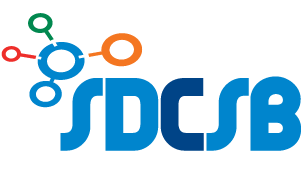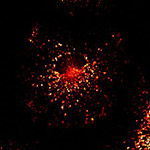Genetics, Bioinformatics and Systems Biology Colloquium
Thursdays, 12:00 pm – 1:00 pm
UC San Diego, Powell-Focht Bioengineering Hall, Fung Auditorium
Complete schedule here
- Timothy Ravasi1, 4, 5, 23, Harukazu Suzuki1, 2, 3, 6, 23, Carlo Vittorio Cannistraci1, 4, 5, 7, 8, 9, 23, Shintaro Katayama1, 2, 6, 23, Vladimir B. Bajic1, 5, 10, 23, Kai Tan1, 4, 24, Altuna Akalin1, 11, Sebastian Schmeier1,10, Mutsumi Kanamori-Katayama1, 2, 6, Nicolas Bertin1, 2, 6, Piero Carninci1, 2, 6, Carsten O. Daub1, 2, 6,Alistair R.R. Forrest1, 2, 6, 12, Julian Gough1, 13, Sean Grimmond1, 14, Jung-Hoon Han1, 15, Takehiro Hashimoto1, 2, 6, Winston Hide1, 10, 16, Oliver Hofmann1, 10, Atanas Kamburov1, 17, Mandeep Kaur1, 5,Hideya Kawaji1, 2, 6, Atsutaka Kubosaki1, 2, 6, Timo Lassmann1, 2, 6, Erik van Nimwegen1, 18, Cameron Ross MacPherson1, 5, Chihiro Ogawa1, 2, 6, Aleksandar Radovanovic1, 5, Ariel Schwartz1, 4, Rohan D. Teasdale1, 14, Jesper Tegnér1, 19, 20, Boris Lenhard1, 11, Sarah A. Teichmann1, 15, Takahiro Arakawa1, 2,6, Noriko Ninomiya1, 2, 6, Kayoko Murakami1, 2, 6, Michihira Tagami1, 2, 6, Shiro Fukuda1, 2, 6, Kengo Imamura1, 2, 6, Chikatoshi Kai1, 2, 6, Ryoko Ishihara1, 2, 6, Yayoi Kitazume1, 2, 6, Jun Kawai1, 2, 6, David A. Hume1, 21, Trey Ideker1, 4, 22,
 ,
,  , Yoshihide Hayashizaki1, 2, 3, 6,
, Yoshihide Hayashizaki1, 2, 3, 6,  ,
, 
- 1 The FANTOM Consortium, University of California, San Diego, 9500 Gilman Drive, La Jolla, CA 92093, USA
- 2 RIKEN Omics Science Center, University of California, San Diego, 9500 Gilman Drive, La Jolla, CA 92093, USA
- 3 General Organizers, University of California, San Diego, 9500 Gilman Drive, La Jolla, CA 92093, USA
- 4 Departments of Medicine and Bioengineering, University of California, San Diego, 9500 Gilman Drive, La Jolla, CA 92093, USA
- 5 Red Sea Integrative Systems Biology Laboratory, Division of Chemical & Life Sciences and Engineering, Computational Bioscience Research Center, King Abdullah University for Science and Technology, Jeddah, Kingdom of Saudi Arabia
- 6 RIKEN Omics Science Center, RIKEN Yokohama Institute, 1-7-22 Suehiro-cho Tsurumi-ku Yokohama, Kanagawa, 230-0045 Japan
- 7 Department of Mechanics, Politecnico di Torino, I-10129 Turin, Italy
- 8 Proteome Biochemistry, San Raffaele Scientific Institute, 20132 Milan, Italy
- 9 CMP Group Microsoft Research, Politecnico di Torino, I-10129 Turin, Italy
- 10 South African National Bioinformatics Institute, University of the Western Cape, Private Bag X17, Bellville, 7535 South Africa
- 11 Bergen Center for Computational Science, Høyteknologisenteret Thormøhlensgate 55, N-5008 Bergen, Norway
- 12 The Eskitis Institute for Cell and Molecular Therapies, Griffith University, QLD 4111, Australia
- 13 Department of Computer Science, University of Bristol, Merchant Venturers Building, Woodland Road, Bristol, BS8 1UB, UK
- 14 Australian Research Council Special Research Centre for Functional and Applied Genomics, Institute for Molecular Bioscience, The University of Queensland, St. Lucia, QLD 4072, Australia
- 15 MRC Laboratory of Molecular Biology, Cambridge CB2 0QH, UK
- 16 Biostatistics Department, Harvard School of Public Health, 655 Huntington Avenue, Boston, MA 02115, USA
- 17 Department of Vertebrate Genomics, Max Planck Institute for Molecular Genetics, Ihnestr, D-14195 Berlin, Germany
- 18 Biozentrum, University of Basel, and Swiss Institute of Bioinformatics, Klingelbergstrasse 50/70, CH-4056 Basel, 4056, Switzerland
- 19 Computational Medicine Group, Atherosclerosis Research Unit, Center for Molecular Medicine, Department of Medicine, Karolinska Institutet, Karolinska University Hospital Solna SE- 171 76 Stockholm, Sweden
- 20 Department of Physics, Chemistry and Biology, Linköping University, SE-581 83 Linköping, Sweden
- 21 The Roslin Institute and Royal (Dick) School of Veterinary Studies, The University of Edinburgh, Roslin, EH259PS, UK
- 22 The Institute for Genomic Medicine, University of California, San Diego, 9500 Gilman Drive, La Jolla, CA 92093, USA
Summary
Combinatorial interactions among transcription factors are critical to directing tissue-specific gene expression. To build a global atlas of these combinations, we have screened for physical interactions among the majority of human and mouse DNA-binding transcription factors (TFs). The complete networks contain 762 human and 877 mouse interactions. Analysis of the networks reveals that highly connected TFs are broadly expressed across tissues, and that roughly half of the measured interactions are conserved between mouse and human. The data highlight the importance of TF combinations for determining cell fate, and they lead to the identification of a SMAD3/FLI1 complex expressed during development of immunity. The availability of large TF combinatorial networks in both human and mouse will provide many opportunities to study gene regulation, tissue differentiation, and mammalian evolution.













